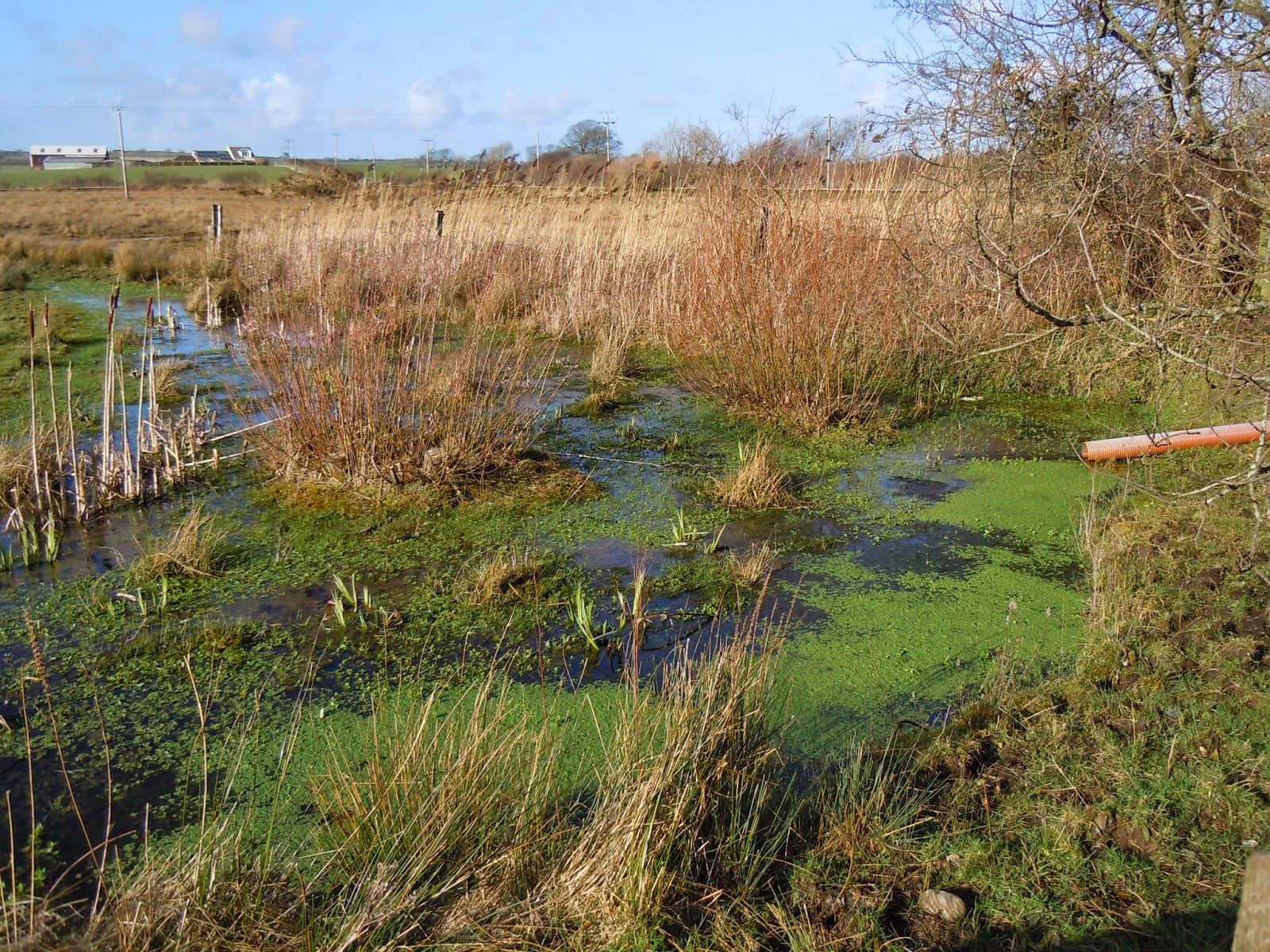Cefni reservoir and Cors Bodeilio provided good opportunity to asses the installation of constructed wetlands on Anglesey.
The Cefni reservoir situated in central Anglesey is a
drinking water source for a significant population of the Isle of Anglesey
county. The reservoir had various inflow points originating from upland streams and the main Cefni river inflow.
Site 1 was the Cefni river inflow carrying approximately 1000 – 2000 litres of water per second into the water body. It is important to the water company that authority managing the water treatment works that water entering the reservoir is not heavily polluted with organic or inorganic substances. One of the main organic contaminant and the most costly to remove is dissolved organic carbon (DOC) imparting a brown colour to the water. The treatment of this water can have sever human health consequences as well as a large water bill every six months. Trihalomethanes which are carcinogenic can form when organic matter binds to the chlorine used in the water treatment process. It is therefore imperative that these are properly removed before consumption.
Site 1. The main inflow to the Cefni reservoir with it brown water heavily laden from DOC, some of which has eroded from degraded peatland upstream such as Cord Erddreiniog.
Constructed wetlands can also be designed to include ancillary benefits such as Island for birds, deeper areas for fish and waders , important considerations when located in a natural setting. This inlet is proposed to have 5 -10% of its water diverted through the wetland plants on the riparian fringes of the river to in order to remove pollutants such as Nitrates and Nitrites and well as sediment in a free surface constructed wetland system.
Site 2 is an inlet with very little discharge (3 litres/second). That is approximately 500 bath tubs in 24 hours. The site along with many other has native Salix tree’s, although tree's are not conducive to constructed wetland efficiency they should be kept as to keep public relations in check.
Site 2
Site 3
Site 4 is located on a steep gradient so it is proposed that a tanks in series design of constructed wetlands is used where water falls down onto the second in the series. The water can be spread across the width of the wetland evenly with distributor channels.
Site 4 with a steeper inflow
Discharge can be measured with the bucket and stopwatch. How much water filled the bucket in a given time This gives a quick assessment of water volume in the stream, crucial for designing a constructed wetland.
The second half of the day saw the group travel to Cors Bodeilio, a rich fen with calcareous influence from limestone springs. We discussed what would make the contracted wetland installed here more efficeint. One of the earliest installation, a horizontal subsurface flow wetland was produced with a gravel and sand medium with woodchip to act as a substrate for bacterial respiration. The wetland subsided slightly exposing the inflow and turning it into a free water surface constructed wetland. To maintain this wetland more gravel is be needed to raise the ground level. Considerations for a constructed wetland include not plating in the inflow zone, maintaining even flow across the wetland with alternate barrier and adding wood chip as a carbon source for denitrification.
Originally of HSSF constructed wetland
FWS constructed wetland installed with LIFE+ funding








No comments:
Post a Comment